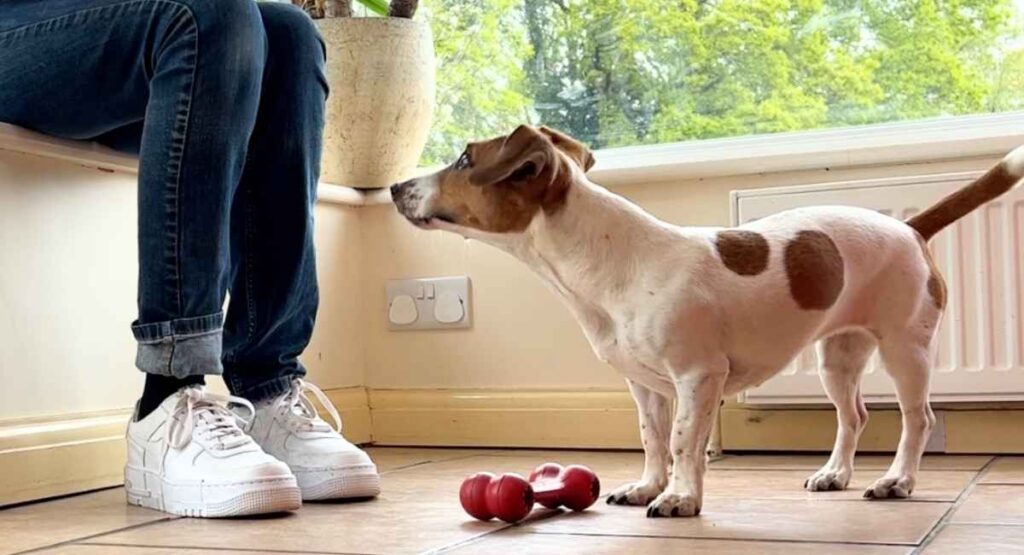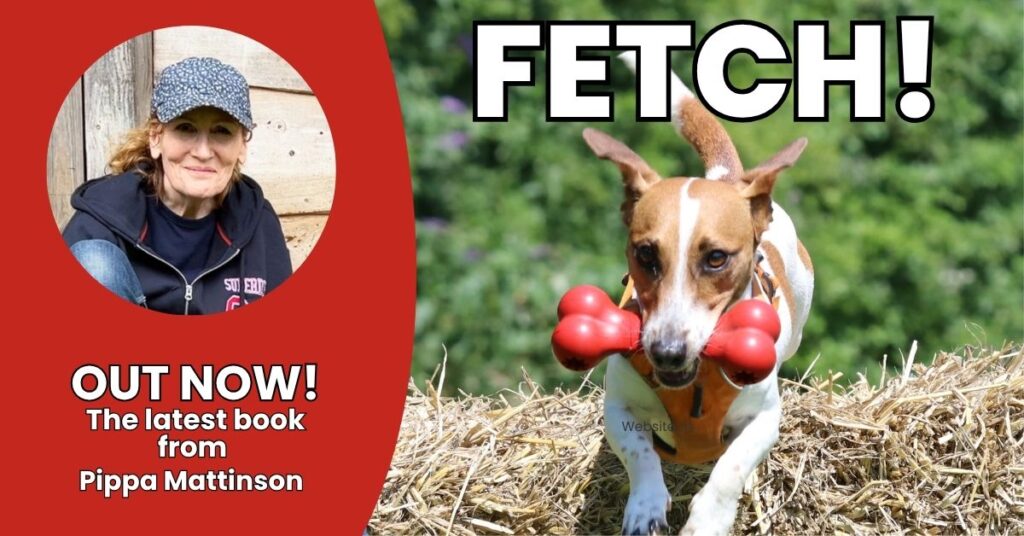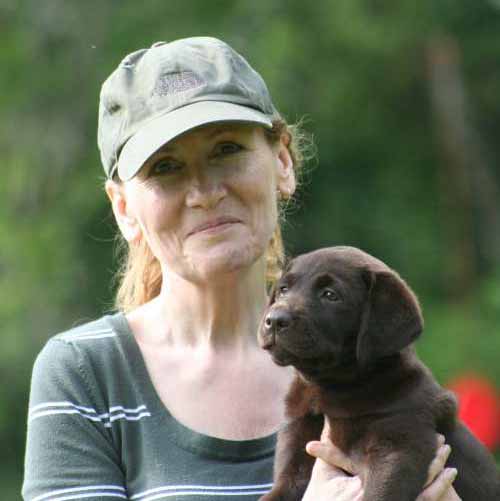So you have got this lovely retrieve toy, and you are early on in the clicker retrieve process. But there’s a problem already.
All you are asking your dog to do is touch the toy. Nothing more complicated than that.

It’s not much to ask is it! Just a little touch, so you can click, and your dog can get a treat.
Yet here you are, right at the beginning of the process, and you are stuck! Because not only will your dog not touch the toy, they won’t even acknowledge its existence. So what happens now?
Don’t panic – this is common. And I’ll explain how to get around it below
First, a question for you
Is the toy completely new to the dog?
Specifically, has this toy ever been used before in any game or context with this dog apart from the games in your current force-free clicker retrieve program?
The reason for this question?
Previous experience with an object may have caused that object to become aversive to the dog.
This can happen without the owner being aware of when or why it happened. It could have happened when someone else was playing with the dog. Or during a training session with you, without you being aware of it.
It happens
Sometimes, something just upsets a dog and the dog associates that upset with an object that happened to be nearby at the time.
This can be overcome.
But it takes time and patience. And it could be very disheartening to someone that is new to force free retrieving.
And let’s face it, life has enough challenges, there’s simply no need to make this harder for yourself.
This is why we specify at the beginning of my fetch course, that the toy or retrieve object used for force free retrieving should be new or at least new to the dog.
What should you do?
If you can’t put your hand on your heart and say honestly that your dog has had no previous experiences with this toy, then I recommend you start over with a new toy.
You can try the remedies below, but it may take you much longer to fix.
If your dog has no previous association with this toy at all, it’s time to look at remedies for this problem.
Getting that first look
If the dog won’t look at the toy on the ground, we need to engineer that first glance so that the dog knows what you want to reward them for. This means a diversion from the starting point of the toy being on the floor.
In method 1, we use the dog’s natural curiosity about objects that others are interested in. In method 2, we use the dog’s enthusiasm for sniffing and nice flavors and scents.
The goal for both these methods is simply to get the dog to look at the toy
METHOD 1
Preparation
You are going to pick up the toy in front of the dog and hold it in front of your face. You won’t try to engage with the dog. You will pretend YOU like the toy, behave as though it’s interesting to you.
To demonstrate your interest in the toy you will
- Wiggle it
- Turn in around in your hand
- Pretend to sniff it
- Pretend to lick it
Now you are ready to play. Have your clicker in one hand and your toy in the other, and treats ready.
Step 1. Place A Toy On The Floor
Engage the dog by feeding a couple of treats.
Stand or sit in a chair, put the toy on the floor, and wait for the dog to look at it. Click immediately the dog glances at the toy.
If the dog fails to look at the toy proceed as follows.
Step 2. Pick Up The Toy
Pick up the toy and show a lot of interest in it. You can try all or any of the suggestions above, pretend to sniff, lick etc, but don’t take too long over it or the dog may get bored.
Five seconds of showing an interest should be enough
Step 3. Place The Toy Back On The Floor
Put the toy on the floor, and wait for the dog to look at it.
Here’s the important bit – click immediately the dog glances at the toy. Don’t wait to finish placing the toy on the floor.
If the dog turns away from the treats and towards the toy as you move the toy away from you and towards the floor, click then!
This immediate click is critical. Even if the dog doesn’t fully focus on the toy but just glances away from the treats and in the direction of the toy, that’s good enough for a click.
Things will only get better from here on in.
METHOD 2
I prefer method 1 because this method 2 can sometimes result in the dog going straight in for a lick or even grabbing the toy. So we need to be ready for that. But for some people this is a faster and more fun approach
Preparation
You are going to pick up the toy in front of the dog and rub it gently against a small piece of cheese or some other very attractive and smelly substance.
You’ll demonstrate how nice the toy now smells by sniffing it
Have your clicker in one hand and your toy in the other. And a smelly treat ready in case the dog grabs the toy
Now you are ready to play.
Step 1. Place A Toy On The Floor
Engage the dog by feeding a couple of treats.
Stand, or sit in a chair, put the toy on the floor, and wait for the dog to look at it. Click immediately the dog glances at the toy.
If the dog fails to look at the toy proceed as follows.
Step 2. Pick Up The Toy
Pick up the toy and rub it against some cheese.
Step 3. Place The Toy Back On The Floor
Put the toy on the floor, and wait for the dog to look at it.
Here’s the important bit – click immediately the dog glances at the toy. Don’t wait to finish placing the toy on the floor.
If the dog turns away from the treats and towards the toy as you move the toy away from you and towards the floor, click then!
This immediate click is critical. Even if the dog doesn’t fully focus on the toy but just glances away from the treats and in the direction of the toy, that’s good enough for a click.
If the dog grabs the toy and does not drop it when you click, hold a piece of cheese against their nose and feed it to them immediately they release the toy. Then throw a second piece of cheese away from the toy so that you can pick the toy up while they chase after it.

Getting The Dog To Look Every Time
Once you have that first ‘look’ and the dog has earned that first treat, wait for them to glance at the toy again. Click immediately, throw the treat away from the toy and wait for them to come back and look at the toy again.
If the dog does not look at the dog quickly you can try bumping it with your foot. Sometimes that little bit of movement with get the dog’s attention back on the toy.
If not, you may need to repeat methods 1 or 2 a few more times, until the dog has caught on to the fact that rewards are now dependent on them looking at the toy.
From Look To Touch And Beyond
Getting a dog to touch the toy is the next step. This is where we move the goalposts a tiny bit and ask for more than a glance.
You either want the dog to hold that look for longer or better still to take a couple of steps towards the toy.
And we do that by withholding reinforcement.
So instead of clicking the dog (followed by a treat) for looking at the toy, we wait for them to give us something more.
This is the fundamental basis of training with a clicker. You reinforce one thing for a while, then you stop reinforcing that thing, and wait for the dog to give you more.
Dogs then experiment to see what else might earn them a click. And dogs get better and better at this the more you clicker train. Sooner or later your dog will take a step towards that toy. And when they do, you’ll be ready to click.
If this is your dog’s first rodeo, you’ll need to cut them some slack. It’ll take a while for them to figure out what to do when the rewards stop coming. The important thing is not to let them fail too many times.
A little bit of failure drives progress, a lot of failure makes dogs give up
It’s okay to reinforce tiny improvements, such as moving their head towards the toy. Basically any interest shown towards the toy is good at this stage. And if you keep the dog moving around the toy so that they are focusing on the toy from different angles, they’ll figure out sooner that the toy is the key to rewards.
If you’d like to follow the clicker retrieve training process through from start to finish, using a series of 30 fun games, you’ll find full instructions for each step of the way in my book FETCH


Free Training Tips
Get Pippa's free dog training tips delivered to your inbox

 Cues And Commands: Be Careful What You Label
Cues And Commands: Be Careful What You Label